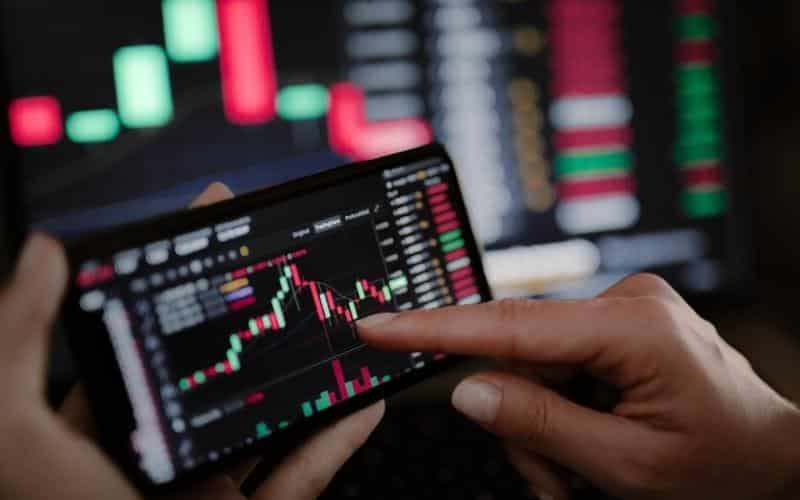Scalping is a popular day trading strategy among stock and cryptocurrency traders. It is a strategy that involves buying and selling digital coins and other assets within a few minutes or even seconds. The point is taking a small profit multiple times a day. Therefore, by adding all these tiny profits, one is able to make substantial returns. In this article, we will look at 1-minute scalping strategies.
What is a 1-minute scalping strategy?
As the name suggests, a 1-minute scalping strategy is one that requires using a 1-minute chart to trade assets. Every candle represents a single minute in such a chart, meaning 60 of these candles represent an hour. While many scalpers focus on a one-minute chart, others use 3-minute, 5-minute, and 10-minute charts.
Scalpers use extremely short-term charts because their goal is to see how an asset is moving within the next several minutes and then take advantage of this movement. As a result, using other chart types like hourly, four-hour, and even daily would not make sense. Below is a 1-minute chart of Cardano.
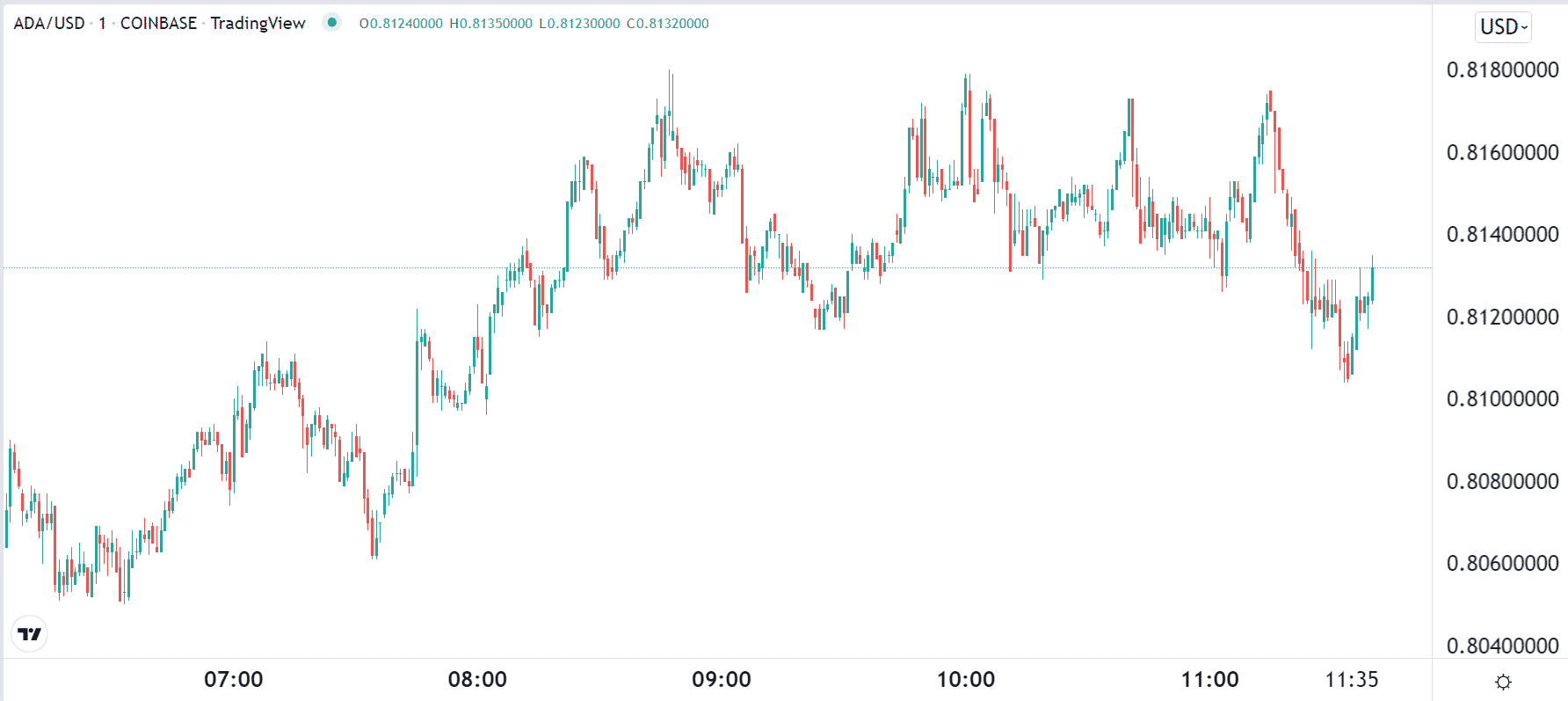
VWAP scalping strategy
The Volume-Weighted Average Price (VWAP) is one of the most popular technical indicators used by scalpers. Unlike other tools like Moving Averages and the Average Directional Index, it can only be applied in day trading.
As the name suggests, it is mostly used to establish the average price of an asset in a certain period while factoring in the volume. Unlike other indicators, it does not focus on the asset’s closing price. Instead, it is based on the present price and the underlying volume.
There are several 1-minute scalping strategies that use the VWAP indicator. For example, a trader can focus on the VWAP breakout approach. In this, they will place a buy trade whenever the price moves above the indicator and a short trade when it cruises below the tool. After initiating the trade, they could opt to hold it as long as it is above or below the price.
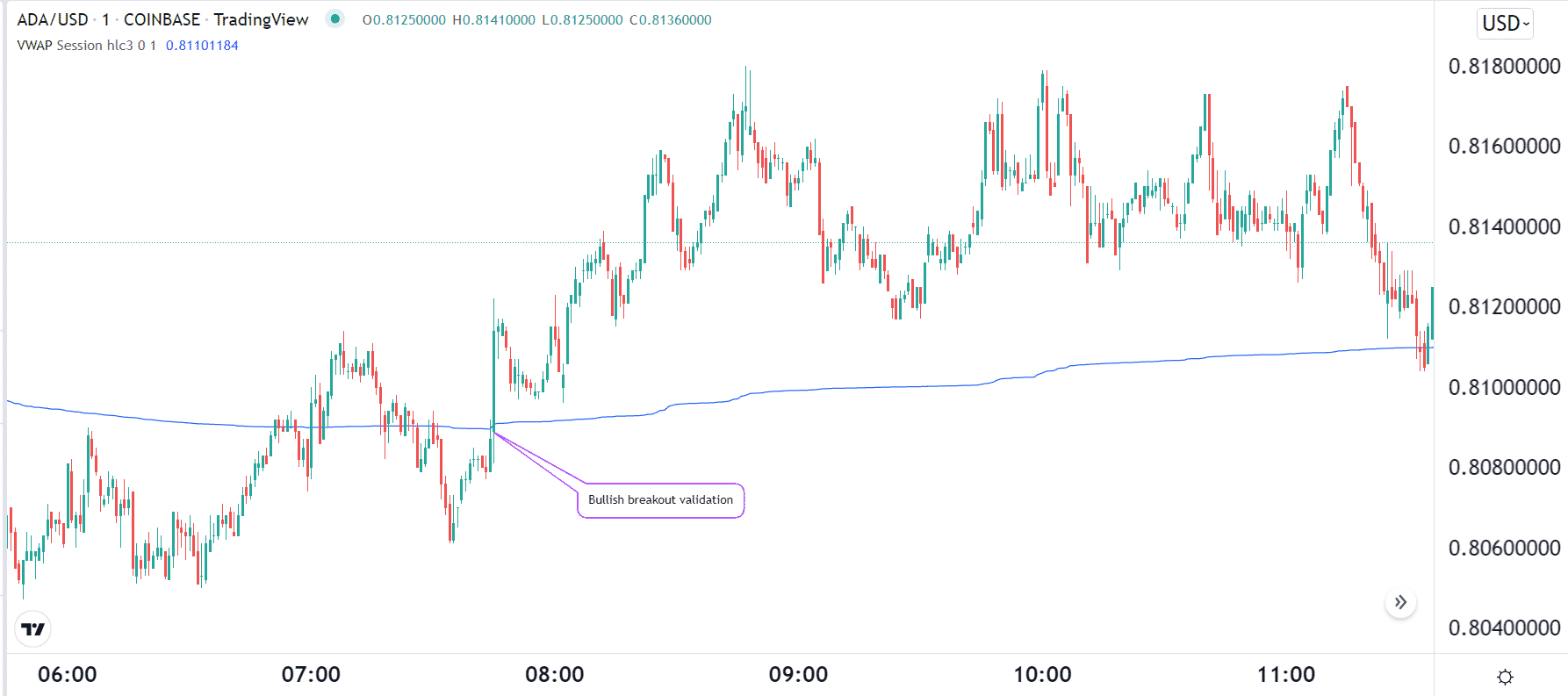
A good example of this is in the chart above. A scalper could have used the crossing of the VWAP as a validation of a bullish trend. As such, they would initiate a bullish trade and then exit as it keeps rising.
EMA breakout
There are several types of Moving Averages, including Exponential, Hull, Smoothed, Simple, and Least-squares. These indicators seek to identify the average price of an asset in a certain period. Their only difference is that they attempt to identify the average price by calculating it differently. For example, the Simple Average uses all periods equally, while the Exponential one focuses more on more recent prices. I find the EMA to be a better indicator.
It is possible to use EMA in one-minute scalping. To do this, you need to identify the sweet spot in terms of the period and then add it to a chart. After this, you will just wait until the coin moves above or below the Moving Average. If it moves above it, it could be a sign that a bullish trend is starting. On the other hand, if it drops below the price, you can initiate a bearish trade.

After buying or selling the asset, a scalper could exit it immediately if it makes a small profit or holds it so long as it is above or below the price.
Channel strategy in scalping
It is also possible to use a channel strategy when scalping. Channels refer to a situation where you identify a series of support and resistance in a chart. Support acts as a floor where the asset price struggles to move below, while resistance is a ceiling where it finds it difficult to move above.
After doing that, you will then need to buy the asset when it tests the support level and then short when it tests the resistance level. At times, this pattern can go on for a while before the asset makes a bullish or bearish breakout.
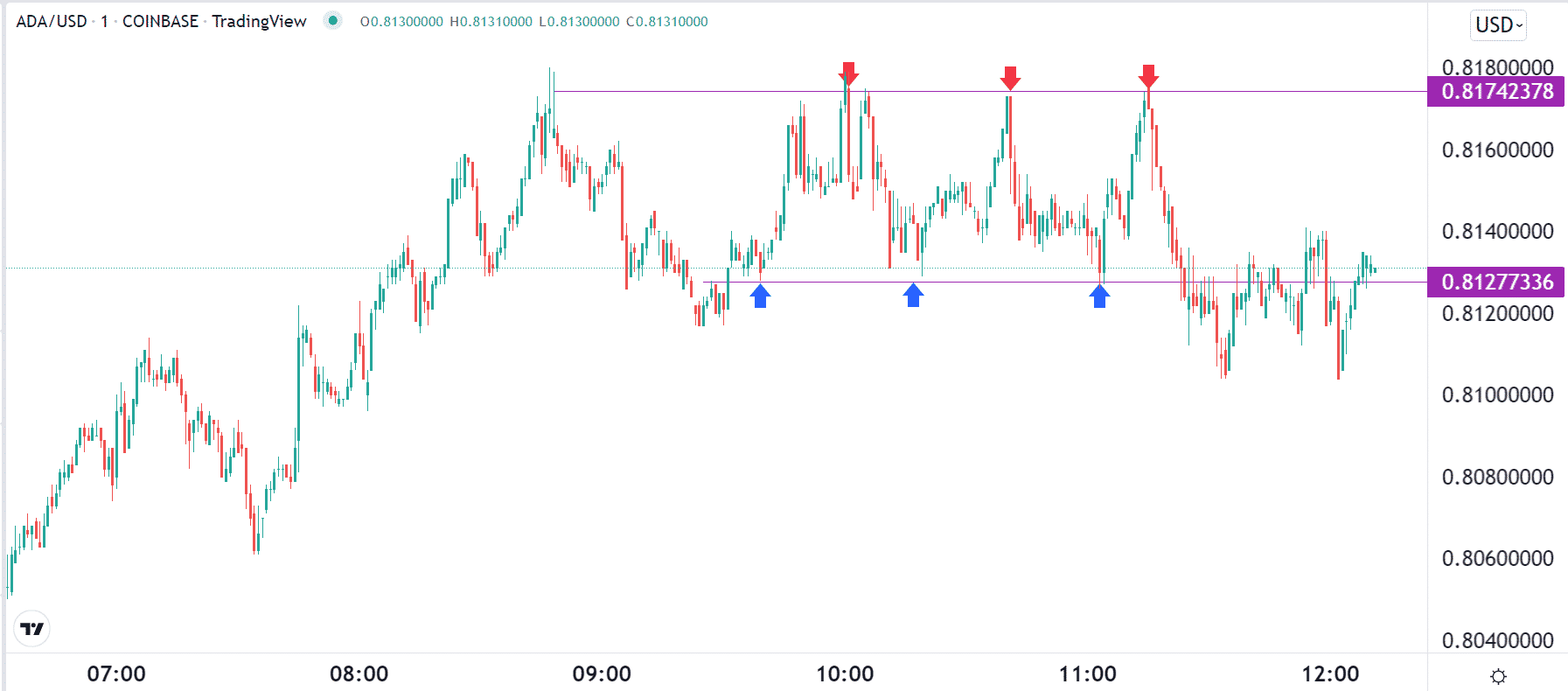
In the example above, a scalper would have initiated bullish trades when it moved to the blue arrows and then short when it tested the red arrows.
Pending order strategy
There are two main types of orders in trading financial markets. There is a market order where your trade is executed at the current price. On the other hand, pending orders are only placed once the asset tests key levels.
The most common types of pending orders are limit and stops. A buy limit order is placed below the current price, while a sell limit one is initiated above the current level. On the other hand, a buy stop is where you direct your broker to execute a bullish trade above the price, while a sell-stop happens below the price.
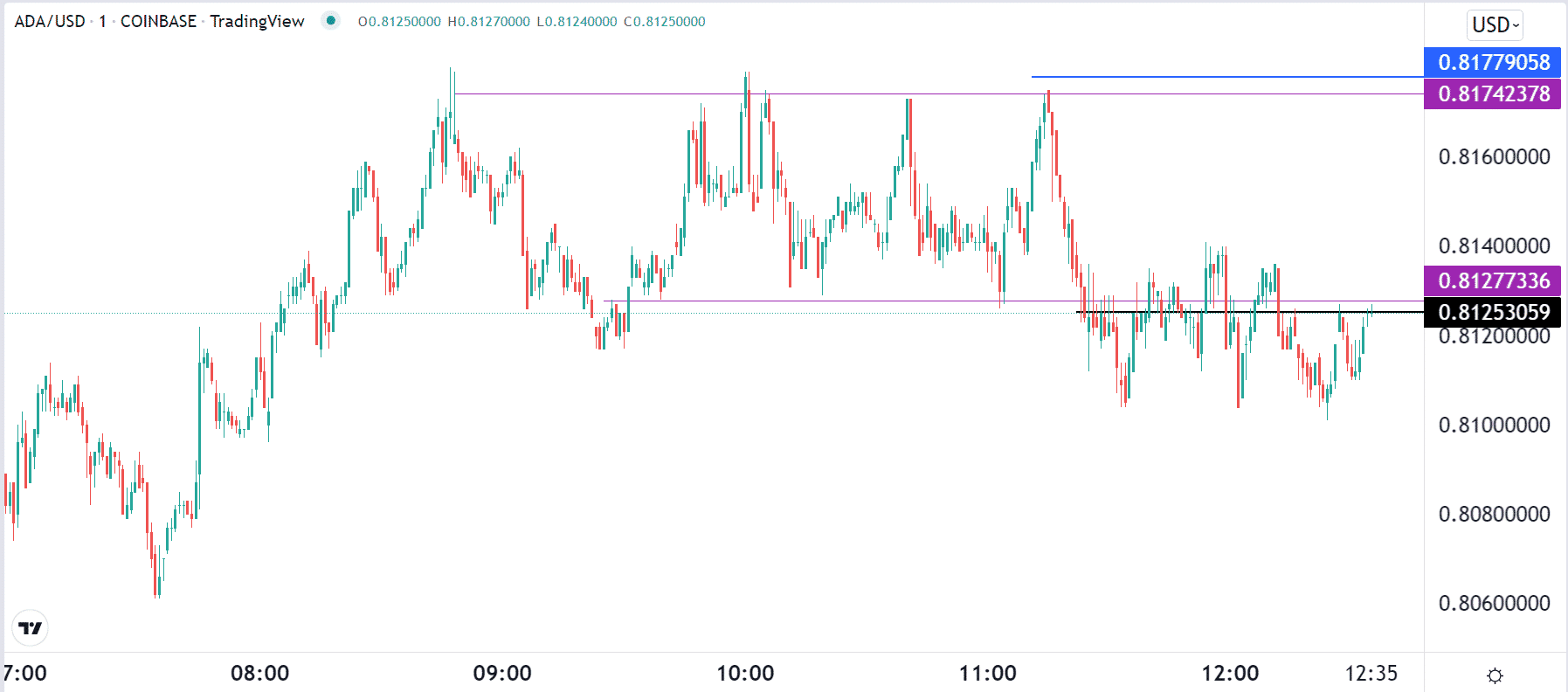
Scalpers use pending orders when an asset’s price is in a channel. The idea is to open a bracket order above the resistance and below the support. In the chart above, one would have opened a buy-stop at $0.8177 and a sell-stop at $0.8125. Therefore, in case of a bullish breakout, the buy-stop will be initiated and vice versa.
Algorithmic trading strategy
Another approach to scalping is to use trading robots. These are tools that automatically do analysis and execute trades. Most robots are created by combining multiple technical indicators like Moving Averages and the Relative Strength Index (RSI). For example, a robot based on the RSI will typically open a bullish trade whenever the gauge moves to the oversold level. Similarly, it would initiate a bearish trade when it moves above the overbought level.
Summary
Scalping is one of the best trading styles that many crypto traders follow to make money. Its benefits are that the approach does not have overnight risks and that it is relatively easy to implement. But it is also a risky one due to the emotional pressure, especially after a series of losses.
